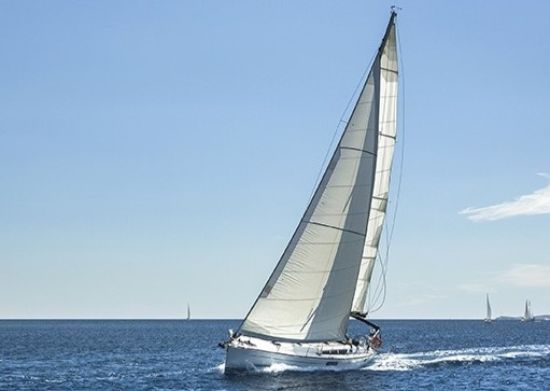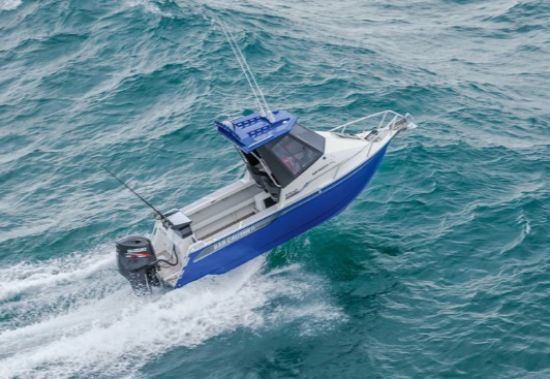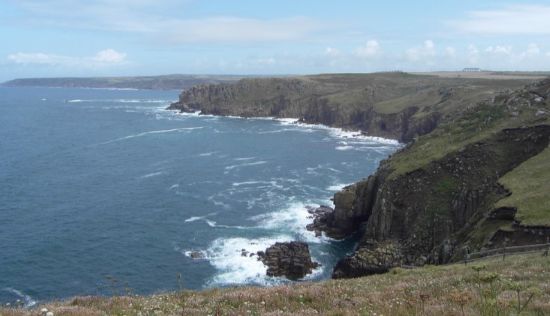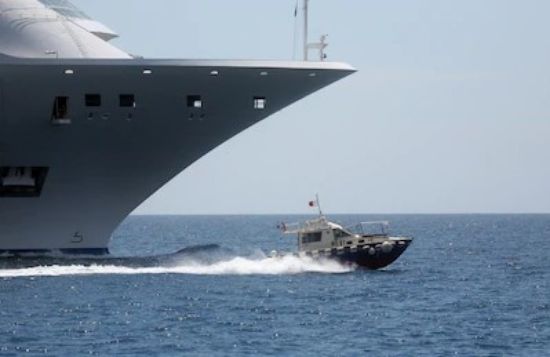A Longer Route May be Quicker/More Comfortable

Whether you are in a sailboat or a powered boat, winds from ahead are always the most uncomfortable as you pitch your way across the bay. There are ways not only to reduce the discomfort of pitching, but the alternative can be the quickest way forward in the long run.
Tacking
When the wind is from ahead on the chosen course, then a sailboat has no option but to turn on the engine or to tack. With a powered boat, you might also like to think about this tacking option. In past articles, when we talked about driving a boat into head seas, it was suggested that it was worth trying the option of making a relatively small alteration in course to reduce the pitching motions.

Even quite a small alteration in course can make a difference because when you change course from having the wind straight ahead to having the wind on the bow, you are effectively making the wavelength longer. Thus, the pitching motions of the boat are less extreme. There is more time for the boat to recover when it comes over one wave before it encounters the next one.
Improved Ride. An alteration in course of, say, 20 degrees can be enough to make a considerable difference in the ride of the boat. But of course, 30 degrees would be better. That is probably about the limit without incurring too much delay.
At that angle, you could probably find that you can make faster progress than if heading directly up into the wind, although you will be traveling a greater distance and burning more fuel. The improved ride and comfort should balance out the extra fuel that you might burn. But there is likely to be a small penalty in the extra spray that is generated, which can sweep across from the weather bow.
Following the Coastline
Assuming that you are heading on a course from one headland to another, there is another option that can be worth trying. Driving your boat directly across the bay between the headlands and you find yourself heading directly into head seas, the direct route from headland to headland may not be the quickest and the best one to follow. Here, the best option might be to deviate into the bay and take the long way around.
You will need to check that there are no navigation hazards in the way, such as shallow water and shoals or rocks along the coastline. There can be considerable benefits in following the coastline around to the next headland rather than taking the direct route.

Benefits. Firstly, by altering course into the bay, you will be putting the wind off the bow instead of directly ahead. As we have seen, this form of tacking can give an immediate benefit in the form of a more comfortable ride. This will take you into the bay and towards the shore. Gradually, as you head into the bay, you will start to receive protection from the worst of the seas because you are getting into the lee of that headland that lies on the other side of the bay.
Eventually, as you get close to the shore, you will then have to head up into the wind again as you start running along the coastline. Here, inshore, you will find better sea conditions and get a better ride because the fetch is greatly reduced. This allows an increase in speed because you are now in relatively protected waters.
You will still have to face the head seas when you get to the headland and start to come out of the lee of the land, but you will benefit from a more relaxed ride when you are inshore. Chances are that you will not have lost any time by taking this inshore route because of the higher speed you can maintain.
Even when you get to the headland and you are close inshore you can often find a patch of relatively smooth water close in under the headland where the tides may be weak. Check the chart closely before going close inshore like this to make sure there are no rocks or shallows close in. Also, check the tidal charts to see what they show as the forecast currents inshore.
Faster Than Expected
Overall, the trip around the bay could be quicker than the trip directly across, and you will get a more comfortable ride in the bargain. There could be further advantages if the tide or currents are against you as they are likely to be weaker inshore. Another benefit is that inshore you will be away from the big ships and that can be a considerable advantage in reduced visibility.

Less Wind, Too. You also need to consider that there may be less wind when you close the coastline, particularly if there is high ground. The benefits of this tactic will depend a great deal on the topography of the bay. You may not find much advantage if the bay has only a slight indentation between the headlands. The best conditions will be found in a deep bay with pronounced headlands, where there will be good shelter under the lee of the land.